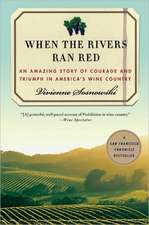Neville Island: Images of America (Arcadia Publishing)
Autor Gia Tatone, Dan Holland Neville Greenen Limba Engleză Paperback – 31 oct 2008
Din seria Images of America (Arcadia Publishing)
-
 Preț: 129.71 lei
Preț: 129.71 lei -
 Preț: 129.71 lei
Preț: 129.71 lei -
 Preț: 130.74 lei
Preț: 130.74 lei -
 Preț: 129.71 lei
Preț: 129.71 lei -
 Preț: 125.22 lei
Preț: 125.22 lei -
 Preț: 130.74 lei
Preț: 130.74 lei -
 Preț: 130.74 lei
Preț: 130.74 lei -
 Preț: 130.92 lei
Preț: 130.92 lei -
 Preț: 132.42 lei
Preț: 132.42 lei -
 Preț: 115.50 lei
Preț: 115.50 lei -
 Preț: 130.97 lei
Preț: 130.97 lei -
 Preț: 129.49 lei
Preț: 129.49 lei -
 Preț: 115.72 lei
Preț: 115.72 lei -
 Preț: 126.07 lei
Preț: 126.07 lei -
 Preț: 131.55 lei
Preț: 131.55 lei -
 Preț: 127.30 lei
Preț: 127.30 lei -
 Preț: 115.72 lei
Preț: 115.72 lei -
 Preț: 131.16 lei
Preț: 131.16 lei -
 Preț: 126.26 lei
Preț: 126.26 lei -
 Preț: 132.42 lei
Preț: 132.42 lei -
 Preț: 130.97 lei
Preț: 130.97 lei -
 Preț: 130.97 lei
Preț: 130.97 lei -
 Preț: 129.71 lei
Preț: 129.71 lei -
 Preț: 126.26 lei
Preț: 126.26 lei -
 Preț: 130.97 lei
Preț: 130.97 lei -
 Preț: 126.26 lei
Preț: 126.26 lei -
 Preț: 131.79 lei
Preț: 131.79 lei -
 Preț: 118.36 lei
Preț: 118.36 lei -
 Preț: 125.22 lei
Preț: 125.22 lei -
 Preț: 126.67 lei
Preț: 126.67 lei -
 Preț: 130.74 lei
Preț: 130.74 lei -
 Preț: 135.25 lei
Preț: 135.25 lei -
 Preț: 132.18 lei
Preț: 132.18 lei -
 Preț: 116.31 lei
Preț: 116.31 lei -
 Preț: 130.97 lei
Preț: 130.97 lei -
 Preț: 132.18 lei
Preț: 132.18 lei -
 Preț: 130.92 lei
Preț: 130.92 lei -
 Preț: 131.15 lei
Preț: 131.15 lei -
 Preț: 131.15 lei
Preț: 131.15 lei -
 Preț: 130.74 lei
Preț: 130.74 lei -
 Preț: 130.97 lei
Preț: 130.97 lei -
 Preț: 130.97 lei
Preț: 130.97 lei -
 Preț: 130.74 lei
Preț: 130.74 lei -
 Preț: 131.15 lei
Preț: 131.15 lei -
 Preț: 130.75 lei
Preț: 130.75 lei -
 Preț: 130.97 lei
Preț: 130.97 lei -
 Preț: 127.08 lei
Preț: 127.08 lei -
 Preț: 129.71 lei
Preț: 129.71 lei -
 Preț: 176.03 lei
Preț: 176.03 lei -
 Preț: 116.13 lei
Preț: 116.13 lei
Preț: 119.78 lei
Nou
Puncte Express: 180
Preț estimativ în valută:
22.94€ • 23.66$ • 19.01£
22.94€ • 23.66$ • 19.01£
Carte indisponibilă temporar
Doresc să fiu notificat când acest titlu va fi disponibil:
Se trimite...
Preluare comenzi: 021 569.72.76
Specificații
ISBN-13: 9780738563442
ISBN-10: 0738563447
Pagini: 128
Dimensiuni: 163 x 231 x 13 mm
Greutate: 0.39 kg
Editura: Arcadia Publishing (SC)
Seria Images of America (Arcadia Publishing)
ISBN-10: 0738563447
Pagini: 128
Dimensiuni: 163 x 231 x 13 mm
Greutate: 0.39 kg
Editura: Arcadia Publishing (SC)
Seria Images of America (Arcadia Publishing)
Descriere
Ten miles from the illustrious city of Pittsburgh is a five-mile island on the Ohio River known as Neville Island. On April 8, 1856, the island was officially named a township and a community was born. The island's fertile soil was rich with produce, and farms grew asparagus, strawberries, and corn. The island became known as the market basket of Pittsburgh with its produce being sold in the most prominent hotels and restaurants. However, at the birth of World War I, the island experienced a drastic turn of fate. Industries arose, and the farms became extinct. Neville Island features over 150 years of obscured history, including the lost Sunshine Island and the failed attempt of Coney Island Park, documenting the community's journey of change under the influence of the Ohio River.
Recenzii
Title: Book about Neville Island serves up some surprising history
Author: Brian David
Publisher: Pittsburgh Post-Gazette
Date: 1/4/2009
To author Gia Tatone, the book, "Neville Island," was a chance to tell the story of a place she loved and to offer "a lot of good, a lot of truth, a lot of hope, a lot of joy" to the people of a community that for a long time has been associated with chemicals and pollution.
To co-author Dan Holland, a historian by training, it was a chance to reveal the little-known, to unravel some historic riddles and, in a way, to show America in microcosm.
To Dorothy Antonelli, of the nonprofit organization called Neville Green that sponsored the book, it fills a need for "a comprehensive history" -- one showing the positives of the community and the beauty of the island while acknowledging the problems brought by industry.
"I wanted people to know that when it began it wasn't that way," she said of the factories and work yards that line the island's eastern two-thirds.
In the early days, the island was a strategically important way station for American Indians, Mr. Holland said, and was later the subject of a dispute between Virginia and Pennsylvania. Virginia controlled the land south of the Ohio, Pennsylvania the land north of it; Neville was in the middle.
Then early settlers discovered the island's rich soil, left behind by countless river floods, and for a century and a half, Neville Island was famous for its agricultural richness, "the market basket of Pittsburgh," as Ms. Tatone put it.
"New York restaurants would put on their menus, 'Asparagus a la Neville Island, '" Mr. Holland said.
"Alot of people don't know that, don't know the island's agricultural history," Ms. Antonelli said.
What they do know is industry, which took over the island during World War II.
According to Mr. Holland, the government bought several farms near the end of World War I with the intent of building a munitions plant. The war ended with the plant unbuilt, and the government offered the land back to the farmers. But the price was too high. "They basically lost their land," he said.
When World War II began, the government decided to use the land as a shipyard. Dravo Corp. eventually would employ 16,000, turning out cargo ships by the hundreds. Other industries moved in, and the island remains heavily industrialized.
Along with ships and chemicals, the industries produced pollution. This led to the most troubling aspect of the island's history, with toxic dumps and coverups both coming to light with some regularity. Most famous was what came to be known as "Poison Park," a planned county park that turned out to be located on a secret waste dump site.
But the island is on a comeback. "Poison Park" has been cleaned up and is now part of the Robert Morris University Island Sports Center, a recreational gem at the island's western tip. There is a new hotel, a new restaurant under construction, and talk of other development capitalizing on the island's river frontage.
And there is, as there has long been, a tight-knit community of island dwellers.
"There's been a lot of anguish, a lot of hard times," Ms. Antonelli said. "The islanders have always lived with it. Most residents here have been here all their lives and never would want to go anywhereelse."
For her, highlighting those people was the primary point in having "Neville Island" written. "I wanted it to be a positive image," she said.
The other goal was to raise money for Neville Green's "Neville Naturalists" program, which each summer teaches island children about the environment. The program is well regarded -- it won the Three Rivers Environmental Award in 1998 -- and is so popular that it ends up turning children away.
The 128-page book, released in November, can be purchased for $20 through Neville Green or for $21.99 in bookstores. All proceeds benefit the organization.
Ms. Antonelli said interest has been high. Ashland Oil bought 100 to give its employees for Christmas.
Ms. Tatone was brought on board because she had written a history of Coraopolis.
She was happy to be asked.
"I grew up going bowling down there," she said. "I take my daughter bowling there now. ... I couldn't resist."
A former teacher, Ms. Tatone is now pursuing ministry. She sees her work on the book, which she donated free of charge, as an early step in that ministry.
"I felt it was something I needed to do as an act of loving service," she said.
She knew Mr. Holland through his work as chairman of the Young Preservationists Association of Pittsburgh and brought him into the project because of his background as a historian.
"I found lots of articles, all stating different things," Ms. Tatone said. "We wanted it to be as accurate as possible and needed his expertise."
Beyond sorting through conflicting details, Mr. Holland saw a pattern to the island's history that reflects on America itself.
"It spans thegamut," he said. "It's had agricultural uses, industrial uses, residential uses and not recreational uses."
He called the university's center "a great adaptive use" for the once-polluted ground and said that kind of restoration and reuse is going to be important throughout the region in coming years.
"You really get a sense for the kind of future our region can have," he said.
And who knows? Maybe it could even see a return to farming.
"The soil is still amazingly fertile," Ms. Antonelli said. "I can grow anything in my garden."
Author: Brian David
Publisher: Pittsburgh Post-Gazette
Date: 1/4/2009
To author Gia Tatone, the book, "Neville Island," was a chance to tell the story of a place she loved and to offer "a lot of good, a lot of truth, a lot of hope, a lot of joy" to the people of a community that for a long time has been associated with chemicals and pollution.
To co-author Dan Holland, a historian by training, it was a chance to reveal the little-known, to unravel some historic riddles and, in a way, to show America in microcosm.
To Dorothy Antonelli, of the nonprofit organization called Neville Green that sponsored the book, it fills a need for "a comprehensive history" -- one showing the positives of the community and the beauty of the island while acknowledging the problems brought by industry.
"I wanted people to know that when it began it wasn't that way," she said of the factories and work yards that line the island's eastern two-thirds.
In the early days, the island was a strategically important way station for American Indians, Mr. Holland said, and was later the subject of a dispute between Virginia and Pennsylvania. Virginia controlled the land south of the Ohio, Pennsylvania the land north of it; Neville was in the middle.
Then early settlers discovered the island's rich soil, left behind by countless river floods, and for a century and a half, Neville Island was famous for its agricultural richness, "the market basket of Pittsburgh," as Ms. Tatone put it.
"New York restaurants would put on their menus, 'Asparagus a la Neville Island, '" Mr. Holland said.
"Alot of people don't know that, don't know the island's agricultural history," Ms. Antonelli said.
What they do know is industry, which took over the island during World War II.
According to Mr. Holland, the government bought several farms near the end of World War I with the intent of building a munitions plant. The war ended with the plant unbuilt, and the government offered the land back to the farmers. But the price was too high. "They basically lost their land," he said.
When World War II began, the government decided to use the land as a shipyard. Dravo Corp. eventually would employ 16,000, turning out cargo ships by the hundreds. Other industries moved in, and the island remains heavily industrialized.
Along with ships and chemicals, the industries produced pollution. This led to the most troubling aspect of the island's history, with toxic dumps and coverups both coming to light with some regularity. Most famous was what came to be known as "Poison Park," a planned county park that turned out to be located on a secret waste dump site.
But the island is on a comeback. "Poison Park" has been cleaned up and is now part of the Robert Morris University Island Sports Center, a recreational gem at the island's western tip. There is a new hotel, a new restaurant under construction, and talk of other development capitalizing on the island's river frontage.
And there is, as there has long been, a tight-knit community of island dwellers.
"There's been a lot of anguish, a lot of hard times," Ms. Antonelli said. "The islanders have always lived with it. Most residents here have been here all their lives and never would want to go anywhereelse."
For her, highlighting those people was the primary point in having "Neville Island" written. "I wanted it to be a positive image," she said.
The other goal was to raise money for Neville Green's "Neville Naturalists" program, which each summer teaches island children about the environment. The program is well regarded -- it won the Three Rivers Environmental Award in 1998 -- and is so popular that it ends up turning children away.
The 128-page book, released in November, can be purchased for $20 through Neville Green or for $21.99 in bookstores. All proceeds benefit the organization.
Ms. Antonelli said interest has been high. Ashland Oil bought 100 to give its employees for Christmas.
Ms. Tatone was brought on board because she had written a history of Coraopolis.
She was happy to be asked.
"I grew up going bowling down there," she said. "I take my daughter bowling there now. ... I couldn't resist."
A former teacher, Ms. Tatone is now pursuing ministry. She sees her work on the book, which she donated free of charge, as an early step in that ministry.
"I felt it was something I needed to do as an act of loving service," she said.
She knew Mr. Holland through his work as chairman of the Young Preservationists Association of Pittsburgh and brought him into the project because of his background as a historian.
"I found lots of articles, all stating different things," Ms. Tatone said. "We wanted it to be as accurate as possible and needed his expertise."
Beyond sorting through conflicting details, Mr. Holland saw a pattern to the island's history that reflects on America itself.
"It spans thegamut," he said. "It's had agricultural uses, industrial uses, residential uses and not recreational uses."
He called the university's center "a great adaptive use" for the once-polluted ground and said that kind of restoration and reuse is going to be important throughout the region in coming years.
"You really get a sense for the kind of future our region can have," he said.
And who knows? Maybe it could even see a return to farming.
"The soil is still amazingly fertile," Ms. Antonelli said. "I can grow anything in my garden."
Notă biografică
Gia Tatone, educator, author, and deputy director of the Young Preservationists Association, along with Dan Holland, founder and chief executive officer of the Young Preservationists Association, began the journey with the island's environmental group, Neville Green, to reveal the concealed history of Neville Island. Neville Green currently ensures beautification efforts for the island and is the founder of the Neville Naturalists educational program for children.















